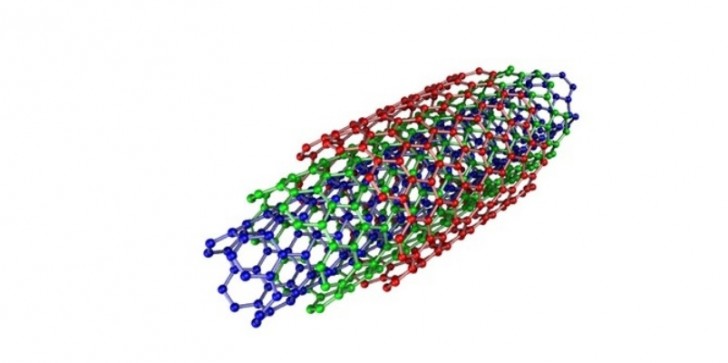Quantification of the release of CNT from composites

Researchers from ETH and the Swiss Federal Laboratories for Materials Science and Technology (EMPA) have established a new measurement method to quantify the amount of free-standing and protruding multi-walled carbon nanotubes (MWCNT). The results allow a prediction of the release of free-standing CNTs for the first time. In a worst-case scenario, up to 40 ppm of free-standing CNT were released, representing a very low fraction of 0.004 wt%, but clearly demonstrating that free-standing and protruding CNTs can be released in the scenario investigated.
Analytical studies combining both the quantification of free nanoparticles release, as well as the toxicological investigations of the released particles from actual nanoproducts in a real-life exposure scenario are still very rare. The authors present a new measurement method for free-standing and protruding multi-walled carbon nanotubes (MWCNT) in the respirable fraction of particles abraded from a MWCNT-epoxy nanocomposite. In general, abrasion of CNT-epoxy nanocomposite can produce three types of CNTs: CNTs that are completely embedded in the epoxy polymer matrix, CNTs that are protruding from the polymer particles, and free-standing CNT’s that are released from the matrix. The protruding and free-standing types can be inhaled.
In contrast to proper matrix materials, composite materials with CNTs can enhance various properties. This, for instance, results in electrical features or improved mechanical properties. The CNT composites are used in various industries such as electronics, automotive, energy, and sporting goods.
The researchers identified a new method to quantify the different types of abraded particles released from the CNT-epoxy nanocomposites. This process occurs through labeling the CNTs with lead (Pb) ions and the measurement of the lead concentration in the abraded nanomaterial. The benefit of this approach is the fact that this technique enables to differ between embedded and other CNTs that are produced through abrasion. The metal ions attached to the nanomaterial are desorbed from the MWCNTs by using an acidic solution. This approach ensures that only the Pb-ions of the free-standing and protruding CNTs are transferred into the solution for the further analysis. The abrasion of 1g of one of the investigated composites led to the release of approximately 40 μg of protruding and 0.4 μg of free-standing CNT, tantamount to a fraction of 0.004 wt% in the case of free-standing CNT. Importantly, the quantity of protruding or free-standing CNT was found to be smaller in poorly dispersed samples, indicating that the low-energy abrasion process was not capable of breaking up CNT agglomerates.
In vitro toxicity studies of dust containing free-standing MWCNTs were performed with cells of the lung that are responsible for the air-blood barrier and for the removal of foreign materials. The results reveal that in contrast to pure MWCNTs, the abraded particles do not induce any acute cytotoxic effects. This finding can be explained by the low amount of accessible MWCNTs.
© 2015 – The Innovation Society
Cited publication: Carbon Nanotubes Released from an Epoxy-Based Nanocomposite: Quantification and Particle Toxicity. Schlagenhauf L, Buerki-Thurnherr T, Kuo YY, Wichser A, Nüesch F, Wick P, Wang J. Environmental Science & Technology.
Image: multi-walled carbon nanotube (MWCNT). Source: Eric Wieser, WikiMedia Commons.